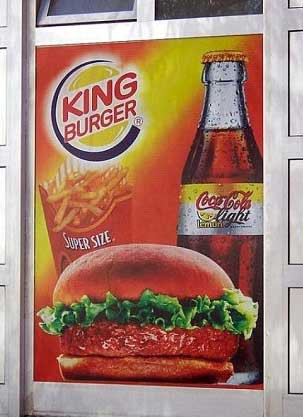
Likely one of 2 things led you on this search:
- You?re wanting to design a logo and don?t want to get in trouble if you happen to (knowingly or unknowingly) rip off someone else?s logo.
- You fell for someone?s rip off logo and want to know if it?s legal.
The simple answer: Logos are not copyrighted, they are actually trademarked. Whether or not legal action is taken for replicating a trademarked logo is fully up to the company or entity that owns the trademark. A company still has legal rights to their logo even if it?s not trademarked. So, don?t steal it because it?s not trademarked.
The longer answer:
Copyright vs. Trademark
According to the United States Copyright Office, copyright protects original works created in a fixed form including ?literary, dramatic, musical, artistic, and certain other intellectual works.? Copyright is identified by the mark.
According to thee United States Patent and Trademark Office (USPTO), trademark protects ?words, names, symbols, sounds or colors that distinguish goods and services from those manufactured or sold by others and to indicate the source of the goods.? If something is trademarked it is identified by the mark.
To put this as simply as possible, both copyright and trademark protect intellectual property (things created or designed by the company) ? they just protect different types of intellectual property. Copyright protects things the company produces. Trademark protects things that identify the company to customers and differentiate against competitors: fonts, colors, sounds, and logos.
Can Something be Copyright & Trademark?
Yes! A logo can be both protected by copyright and trademark. In fact, typically a trademark covers a limited scope of situations; whereas copyright covers nearly all instances of copying that is effecting the original creator?s business and intent. Therefore it?s not uncommon for larger corporations to protect their identity under both trademark and copyright.

When it comes to copyright and trademark, the whole purpose is for a company to be able to defend it?s unique identifiers that they?re using to establish themselves in their industry, across all avenues. For example Apple Leasing and Apple can both have the name Apple and both can use apples in their logos ? one is for the car leasing industry and one for the technology industry. Neither are sole owners of the use of the word ?apple? or the image of apples. However, if the Apple Leasing logo suddenly looked like the iconic Apple logo, it would not only create confusion for consumers in the markets, but Apple would have the right to force Apple Leasing to change their logo through trademark protection; as Apple Leasing would now be effecting Apple?s business by confusing their customers.
Does it Have to Have a Trademark or Copyright to be Protected?
No! The moment a logo is created, so long as it?s justifiably original, the owner has protectable rights to that creation under what?s called ?common law?. However, owning a federal trademark registration on the logo provides a number of significant advantages over common law rights alone and would be easier to win in court.
For example, in the United States a registered trademark can enforce the trademark in all U.S. states, sue for damages (including lost profits), and significantly, recover attorneys? fees and costs incurred in protecting the trademark against infringement. If a trademark owner registers in a state, the trademark owner can enforce the trademark throughout the entire state, and receive similar statutory remedies. These could be harder to achieve under common law, especially across state lines.
What is Common Law? (Hint? it looks like ?)
An unregistered trademark is known as ?common law? and is a form of legal protection for the creator of a logo or phrase created by a business or individual to identify themselves in their industry.
Although not required by law, a ? serves as notice to the public that the words or logo is actually an unregistered trademark. That?s right, the ? actually signifies an un-registered logo or phrase!
If something is not protected under trademark or copyright, the original owner can still protect their creation in court, they must be able to prove they were the original creators. However, as mentioned, having the trademark or copyright before appearing in court significantly helps win the battle and can ensure a little more payout.
The flip side of this, is just because you see someone didn?t trademark or copyright their logo or catch phrase, doesn?t mean it?s fair game ? you can be sued for infringement should the owner choose to do so.
How to Copyright Something
Again, what?s nice about copyright, is it?s pretty much yours the moment you create it ? whether you file or not. However, if someone steals it and you decide to pursue it in court ? then you will need the official copyright filed. The important thing is to be able to prove you were the original creator. In some cases, the best way to do that is to go ahead and file for the copyright right away; in other cases, it might not be worth it until you want to present your case in court. For resources on how to Copyright and some quick facts, visit: https://www.copyright.gov/help/faq/faq-general.html#register
How to Trademark Something
Again, trademark might not be necessary. Or you might not need it until you want to justify your ownership in court; at which point, have the trademark will greatly help. Registering a trademark is fairly easy. Many businesses can file an application online in less than 90 minutes. Simply register on the U.S. Patent and Trademark Office?s (USPTO) web site, www.uspto.gov.
The USPTO actually has a really nice FAQ here to see if it?s something you think you should do: https://www.uspto.gov/sites/default/files/documents/BasicFacts.pdf
To Summarize

There?s red tape all around corporations and business, from taxes down to the logo. Trademark and Copyright are not mandatory to have for your logo and you can be protected without them. However, you can defend yourself much easier and much better if you have the trademark. If you?re worried someone might try to steal your logo or brand identity, and you want to be proactive ? file for the trademark and copyright any materials you see fit. If you?re rejected, figure out why and course correct. Keep in mind, if you do trademark your logo it will be much more work to change your brand?s identity down the road and you?re a lot more committed to that logo for the long run.
If you?re designing a logo, do your homework. Research the main players in the industry, competitors and similar businesses ? make sure you?re not using a logo that would be viewed as copying their logos whether it be fonts, colors, and images. Make sure your work is unique, focus on your brand?s identity and ways to differentiate yourself, not assimilate ? working on that will very rarely produce infringing work.


